Flying for the first time outside mainland China, state-owned planemaker COMAC proudly showed off its C919 and ARJ21 commercial aeroplanes at the Singapore Airshow – held between Feb 20 to 25. The Chinese homegrown planes raised eyebrows and caught the attention of thousands of audience at a time when two largest plane manufacturers – Boeing and Airbus – are hit with crises.
While Airbus faces supply chain issues, largely due to the Covid-19 pandemic, Boeing is plagued with a safety scandal after a door panel was blown out midair on an Alaska Airlines last month. Embarrassed, Boeing had decided not to bring any commercial planes to the major international aerospace event after the U.S. safety regulators ordered the temporary grounding of Boeing 737 MAX 9 planes.
Developed by the Commercial Aircraft Corporation of China (COMAC), the Chinese aircraft was deliberately sent to Singapore to send a message – there’s a third player in the aviation industry long dominated by the Western countries. Not only the Singapore Airshow provides an excellent opportunity to showcase the Chinese capability, it also shows that a competitor from Asia has emerged.
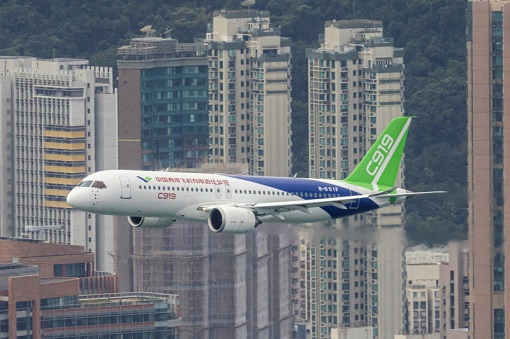
If you think the Chinese new planes are yet another piece of junks, think again. Previously, people used to laugh at China’s high-speed train. Today, the Middle Kingdom’s railway network exceeded 155,500 km, including 43,700 km of high-speed railways speeding at 450 km/h. But that could be obsolete soon as the country already has one “maglev train” in operation in Shanghai capable of 1,000 km/h.
The Western powers also once laughed at China’s space program. Today, the country has its own dedicated space station – “Tiangong or Heavenly Palace” – unlike the International Space Station (ISS) being shared by the U.S., Russia, Japan, Europe and Canada. China was forced to build its own space station because Chinese astronauts were prohibited from the ISS.
Heck, it has even sent a Mars rover to explore the planet in search for signs of life. So, how difficult it is to build an aeroplane when it has already launched spaceships into the outer space? The project to produce its own passenger aircraft was hatched arguably because of determination from a popular saying – “the Chinese people sell 100 million pairs of jeans to exchange for a big plane”.
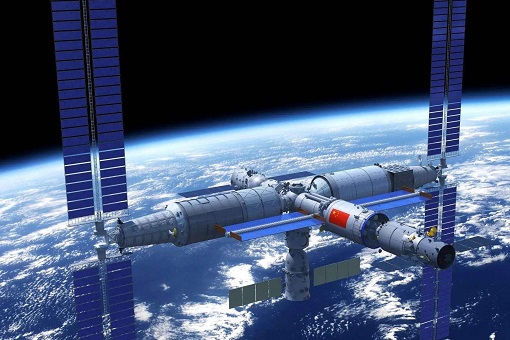
The C919 can be configured for up to 192 passengers and fly up to 5,550 kilometers (about 3,500 miles), whilst the smaller regional jet called the ARJ21 can accommodate up to 97 passengers and fly up to 3,700 kilometers (2,300 miles). As usual, critics and Chinese-haters were quick to say that China cannot claim the planes to be home grown or “Made in China”.
Sure, the C919 uses the same engine as Airbus’s narrow body passenger jetliner the Airbus A320neo. The aircraft also contains Honeywell’s electricity system and landing gear, General Electric’s flight recorder, CFM Leap’s engine, Parker Aerospace’s flight control system and fuel system, Rockwell Collins’ weather radar and simulate system and even Michelin’s tires.
In truth, no aircraft manufacturer, including Airbus or Boeing, makes 100% parts themselves. American maker Boeing sources about 40% to 50% of components for its 787 Dreamliner from outside the United States. Likewise, European maker Airbus also sources its parts from countries such as Malaysia. At least, the C919 successfully flew to Singapore without its door panel blown off while taking off.
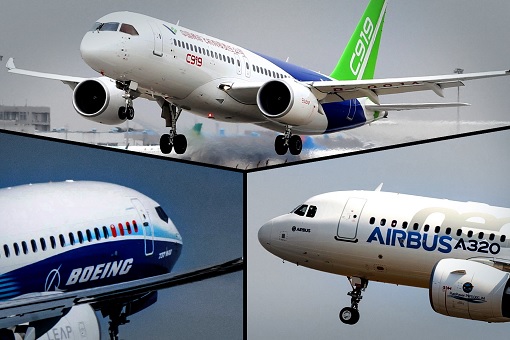
It would be foolish to reinvent the wheel by designing and manufacturing everything from the scratch. Commercially, it’s a win-win solution to source key components from the West – the American and European manufacturers get new business from China while COMAC can go to the market quicker. It’s not like it reverse-engineer everything from Boeing or Airbus.
If the Chinese commercial planes cannot be called a homegrown aircraft, then NASA too should be mocked because their spaceships actually used Russian rocket engines, namely RD-180 since 1990s. It was only in March 2022 that Moscow decided to stop supplying rocket engines to the U.S. in retaliation for its sanctions against Russia over Ukraine invasion.
The “proven technology” sourced from the West is essential for certification from the U.S. and European aviation regulators at a later stage. Western regulators can’t say the Chinese-made C919 cannot be certified because its engine or landing gear fails some tests or compliance. Get real, the C919 project started only in 2007, before entering the assembly line in 2015.
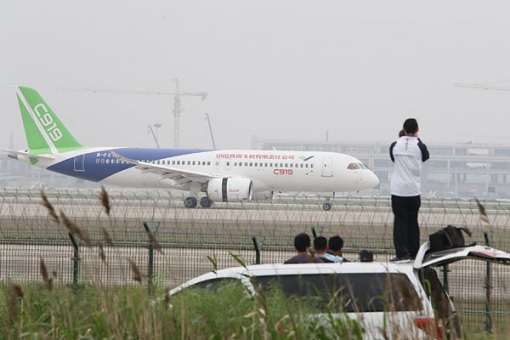
It’s an achievement that China could produce commercial planes in less than 20 years, even though 40% of the parts came from the West. Some extreme anti-Chinese analysts said the external parts were as high as 99%. It doesn’t matter whether it’s 40% or 99%. The point is China has produced its own commercial aeroplanes, and there isn’t another country that could do what it did.
The C919, a rival to the Boeing 737 MAX and Airbus A320neo family single-aisle jets, was a “baby step” for China to become self-sufficient in key technologies. The C919’s first commercial flight took place in May last year, travelling from Shanghai to Beijing. COMAC is positioning the C919 as an alternative to Airbus and Boeing passenger jets, which currently dominating about 99% of the large plane market.
As both aviation giants struggle to meet demand for new planes, COMAC’s strategic move is to seize domestic market by disrupting Boeing and Airbus’ market share in China. At the same time, it is playing a humble game by positioning the C919 as a participant in the international market, not a challenger. The Chinese knew it had a long way to go, and understood how the West could be easily offended if challenged.
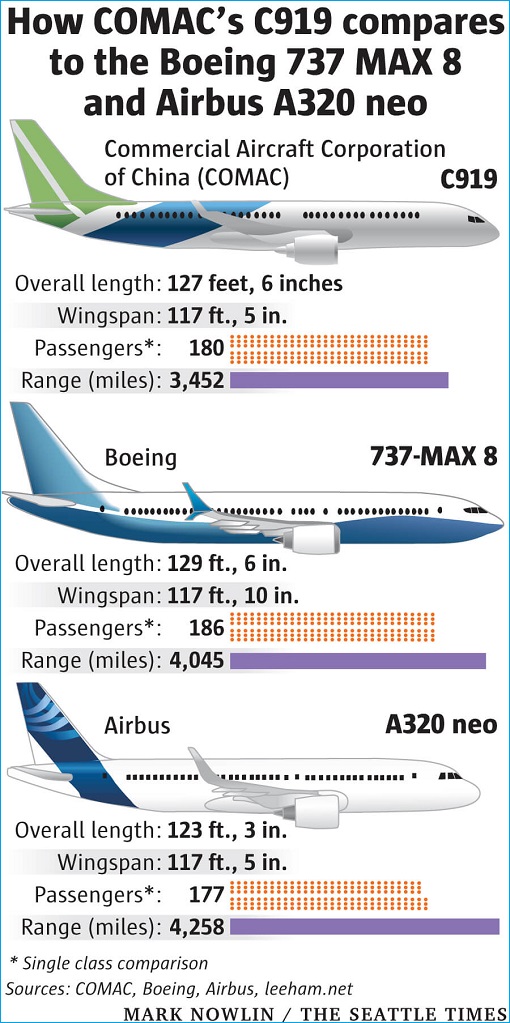
The domestic orders for the C919 have reached 1,061 – four already started serving China Eastern Airlines flights between Shanghai and Chengdu in Southwest China’s Sichuan Province in early August 2023. At the Singapore Airshow, it signed a deal with China’s Tibet Airlines for 40 C919 and 10 ARJ21 jets. With only Chinese regulators having certified the C919 in September 2022, the biggest hurdle is obvious.
Both the American and European regulators are expected to not certify the Chinese planes, even if they are safer and has better quality control than Boeing or Airbus. It would be a business suicide to certify the C919. However, the fact that Boeing insisted that 737 Max aircraft is “the safest airplane” at a time when C919 was being showcased speaks volumes about the potential challenges from the Chinese manufacturer.
Dave Schulte, Boeing’s commercial marketing managing director for Asia-Pacific who was trying to create the narrative that the American 737 Max was safer than the Chinese C919, acknowledged that COMAC’s target would be the airlines in Southeast Asia. Of course, you don’t need to be a rocket scientist to know that C919 is actually the safest plane simply because China cannot afford a disaster like the Alaska Airlines.
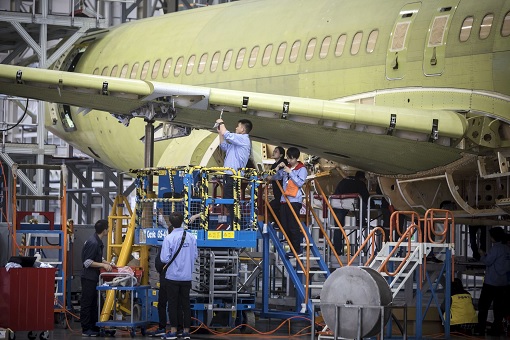
But even without overseas business, COMAC will be incredibly busy for the next two to three years delivering orders placed domestically. It will also invest tens of billions of dollars over the next 3 to 5 years to expand C919 production capacity. Despite Boeing and Airbus’ best effort to play down the impact of the Chinese commercial aeroplanes, the truth is they will lose at least 20% of the global market.
According to data from Boeing’s latest Commercial Market Outlook (CMO) report, China will become the biggest domestic aviation market in the world in the next two decades. The country will account for 20% of the global aeroplane demand by 2042 as it needs more than 8,500 new jets. China will account for half of the aircraft demand in the Asia Pacific region alone.
Indonesian low-cost carrier TransNusa already operates two Chinese-made ARJ21 aircraft. Meanwhile, GallopAir, a new Brunei-based airline backed by Chinese investors has ordered 30 COMAC planes worth US$2 billion, including the first overseas C919 purchases. The new airline will start with short-haul flights, before expanding to medium-haul routes serving Southeast Asia, North Asia and the Southwest Pacific regions.
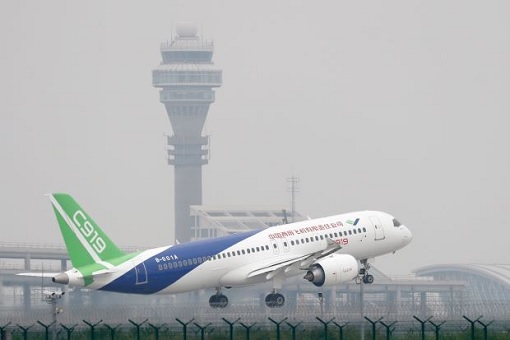
Therefore, even with certification from the Civil Aviation Administration of China, it is giving Boeing and Airbus a run for their money as the competition from C919 has already begun, at least within China. Like homegrown smartphone Huawei, Xiaomi, Vivo and OPPO, as well as the bullet trains and even aircraft carriers, eventually the Chinese produced “cheaper” planes will dominate the sky in China.
But the C919 is just the beginning. The domestic demand will provide valuable data and experience for COMAC to learn and improve, building up enough production capacity and airworthiness to become a mature and proven player. The next plan is the long-range C929, a wide-body twinjet airliner that will accommodate between 250 and 350 passengers – competing directly with Boeing 787 and Airbus A350.
Other Articles That May Interest You …
- Designed By Clowns, Supervised By Monkeys – Boeing 737’s Door Panel That Blew Off Did Not Have Bolts
- Cursed & Grounded – How “Luck” Saved 171 Passengers After Alaska Airlines Boeing 737 MAX 9’s Exit Door Detached
- Committee Final Report – Boeing & FAA Responsible For Hiding Design Flaws In 737 MAX That Killed 346 People
- FAA Calculated Boeing 737 MAX Could Crash 15 Times & Kill More Than 3,000 People – But Allowed It To Keep Flying
- More Problems – Now Boeing Is Forced To Suspend Test For New 777X Aircraft After “Door Explosion”
- An Admission Of Guilt – Former Boeing Official Invokes Fifth Amendment Protection In 737 MAX Scandal
- Boeing 737 MAX Has “No Value” – Lawyer Says Public Doesn’t Trust It, Client Can’t Use It
- Zero New Orders For 737 MAX – Airbus To Overtake Boeing As World’s Biggest Plane Maker
- It’s Not Over Yet – Lawsuits Are Piling Up Against Boeing For Misleading Investors & Covering Up
- Profit-Hungry Boeing – Crashed 737 Max Jets Did Not Have 2 Safety Features Because They’re Optional
- Secret Revealed – The Secret Chambers Where Pilot & Cabin Crew Rest & Sleep (Photos)

|
|
February 24th, 2024 by financetwitter
|


|

|

|

|

|

|




























Comments
Add your comment now.
Leave a Reply